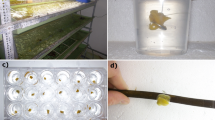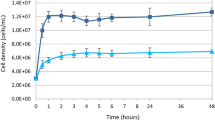Abstract:
There is increasing interest in biotechnological production of marine sponge biomass owing to the discovery of many commercially important secondary metabolites in this group of animals. In this article, different approaches to producing sponge biomass are reviewed, and several factors that possibly influence culture success are evaluated. In situ sponge aquacultures, based on old methods for producing commercial bath sponges, are still the easiest and least expensive way to obtain sponge biomass in bulk. However, success of cultivation with this method strongly depends on the unpredictable and often suboptimal natural environment. Hence, a better-defined production system would be desirable. Some progress has been made with culturing sponges in semicontrolled systems, but these still use unfiltered natural seawater. Cultivation of sponges under completely controlled conditions has remained a problem. When designing an in vitro cultivation method, it is important to determine both qualitatively and quantitatively the nutritional demands of the species that is to be cultured. An adequate supply of food seems to be the key to successful sponge culture. Recently, some progress has been made with sponge cell cultures. The advantage of cell cultures is that they are completely controlled and can easily be manipulated for optimal production of the target metabolites. However, this technique is still in its infancy: a continuous cell line has yet to be established. Axenic cultures of sponge aggregates (primmorphs) may provide an alternative to cell culture. Some sponge metabolites are, in fact, produced by endosymbiotic bacteria or algae that live in the sponge tissue. Only a few of these endosymbionts have been cultivated so far. The biotechnology for the production of sponge metabolites needs further development. Research efforts should be continued to enable commercial exploitation of this valuable natural resource in the near future.
Similar content being viewed by others
Author information
Authors and Affiliations
Additional information
Received November 5, 1998; accepted June 20, 1999.
Rights and permissions
About this article
Cite this article
Osinga, R., Tramper, J. & Wijffels, R. Cultivation of Marine Sponges. Mar. Biotechnol. 1, 509–532 (1999). https://doi.org/10.1007/PL00011807
Issue Date:
DOI: https://doi.org/10.1007/PL00011807




